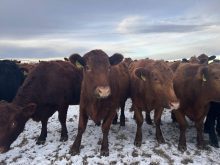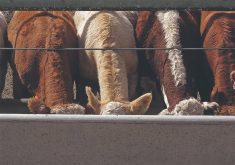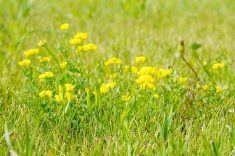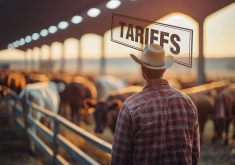Sourcing quality breeding stock has the greatest impact on carcass quality — and having carcass data is “integral” to that process.
But too many producers are flying blind, according to Tom Lynch-Staunton, director of industry relations for Livestock Gentec.
“Most people sell their calves in the fall at weaning and really have no idea how those animals perform further down the line,” said Lynch-Staunton.
“It’s really important to get back to those producers whether their animals actually grade well or yield well. If they don’t know, they have no idea whether they can make improvements or not.”
Read Also

Farming Smarter receives financial boost from Alberta government for potato research
Farming Smarter near Lethbridge got a boost to its research equipment, thanks to the Alberta government’s increase in funding for research associations.
But there is a major fly in the ointment.
“If you’re a cow-calf producer and you’re selling your calves in the fall and you’re not getting paid for any carcass quality, there’s really no incentive for you to increase those traits,” said Lynch-Staunton.
In fact, traits for improved carcass quality “can sometimes be antagonistic to production traits on the ground,” he said.
However, a recent study by Livestock Gentec found that breeding for carcass quality traits — over the long run — will put some serious money into the pockets of cow-calf producers. The cost-benefit analysis, conducted last year by the research organization, measured genetic improvement in birth weight, weaning weight, and post-wean gain.
“We found that if you were selecting for bulls with those three traits, you were able to make genetic improvement on your calf crop at about $4 per calf per year,” said Lynch-Staunton.
- More from the Alberta Farmer Express: The fearless researcher who revolutionized cattle breeding
That figure didn’t include items such as feed or labour, and it went up to $10 per calf per year when additional traits that improve carcass quality (such as yield grade, marbling, or back fat) were targeted in a breeding program.
Best of all, as genetically superior heifers were retained, the savings started to compound.

“In 10 years, your cow herd could be worth about $100 more (per animal) than it was at year zero,” said Lynch-Staunton.
“If we can improve the good cattle, even the bad cattle will be a little bit better.”
But there’s another issue to deal with — actually getting carcass data.
“Information transfer is really essential to doing any sort of genetic improvement, whether it’s carcass traits or production traits,” said Lynch-Staunton.
“That can come through a system like BIXS, it can come through other software systems, or it can come through one-on-one relationships between a cow-calf producer and a feedlot.”
BIXS (short for Beef Information Xchange System) is “a bit of a sore spot” for the beef industry, he said.
“It’s taken a long time to get up and running, and the first version didn’t work out very well.”
The initial version was shut down in December following complaints about its slow processing speeds and low uptake among producers. Version 2.0 was given a soft launch in March, but as reported by Alberta Farmer earlier this month, it has attracted fewer than 1,000 users — only a small fraction of what’s needed to make it viable.
However, Lynch-Staunton said he is cautiously optimistic that cattle producers now have a better system for tracking their cows from pasture to packing plant.
“The second version seems very impressive,” he said. “But regardless of whether it’s BIXS or another system, there needs to be some sort of information exchange system that’s easy for cow-calf producers to use to be able to get information back on his or her carcass quality.
“Some producers may not care, of course, but you can’t make any improvement if you have no idea what your cattle are doing.”
Ultimately, it’s the industry as a whole that suffers when producers don’t consider the quality of their end product, he said.
“If we can get people to focus on carcass quality in the greater industry, that only makes our product better for our customers,” said Lynch-Staunton.
“And if we can create a quality product that people will continue to buy — and be happy about buying — that should continue to drive the economic sustainability of the industry.”















